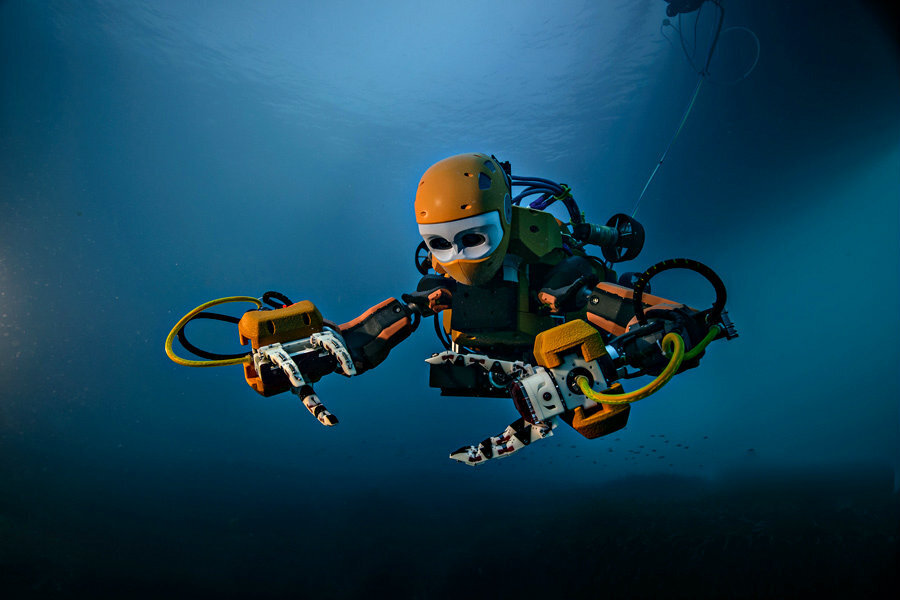A new 'robo-mermaid' can hunt for deep-sea treasure with a delicate touch
Loading...
Robots and artificial intelligence have opened doors in the fields of manufacturing and machine learning, but now they have gone where few expected them to go: deep sea diving.
Stanford University professor of computer science Oussama Khatib developed his new deep ocean avatar in response to a need to dive deeper than humans can comfortably go. The robot he created, named OceanOne, is so revolutionary that it could change the field of deep sea diving, forever.
"OceanOne will be your avatar," Dr. Khatib said in a Stanford press release. "The intent here is to have a human diving virtually, to put the human out of harm's way. Having a machine that has human characteristics that can project the human diver's embodiment at depth is going to be amazing."
Unlike other submersibles, this robot is humanoid – it is described as a "robotic mermaid." The robot's humanlike construction and touch sensors mean that OceanOne's operators are able to use the robot to complete a variety of tasks previously out of reach for submersible technology. It was developed to explore coral reefs in the Red Sea, at levels far too deep for a human diver.
OceanOne is approximately human sized, with flexible, jointed arms that function much like human arms, and a mermaid-like tail, which holds the robot's computer system and eight multi-dimensional thrusters.
Haptic sensors on the robot's hands allow operators to handle potentially fragile objects without fear of crushing them. Soon, the robot may be equipped with touch sensors for even greater usability.
"You can feel exactly what the robot is doing," Khatib said. "It's almost like you are there; with the sense of touch you create a new dimension of perception."
Scientists can take full control of the diving robot, but OceanOne's brain, which responds to ocean conditions and helps modulate its movements, makes human control mostly unnecessary.
This ability makes the new robotic technology invaluable for divers who seek to explore deep ocean wrecks or archeological sites without the dangers inherent in human exploration.
OceanOne made its maiden journey into the wreck of French King Louis XIV's flagship La Lune, which sunk off the coast of France in 1664.
When operating the robot, Khatib spotted a vase and instructed the robot to retrieve it. OceanOne's force sensors allowed it to carefully pick up the vase without breaking it.
The success of this one small operation means that OceanOne may be an invaluable tool for future researchers who have a difficult time reaching ocean depths with conventional divers. That could include commercial endeavors, such as oil rig maintenance or deepwater mining.
It is unclear what the creation of OceanOne, and its potential applications to high-risk diving situations, will do to the field of deep sea wreck diving, which has a culture all its own.
Author Robert Kurson addressed this swashbuckling culture and the risks it entails in his best-selling 2005 book, "Shadow Divers," which told the story of two wreck divers who faced every human extreme to explore World War II era wrecks.
Other divers test human limits for the fun of it, an element of thrill that, for some, may never be entirely replaced by humanoid robotic divers like OceanOne.








